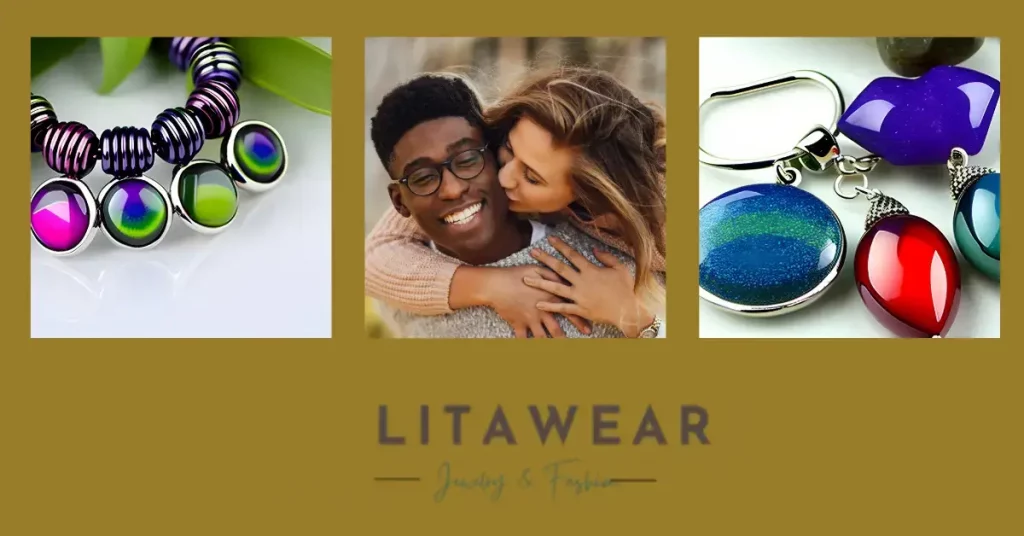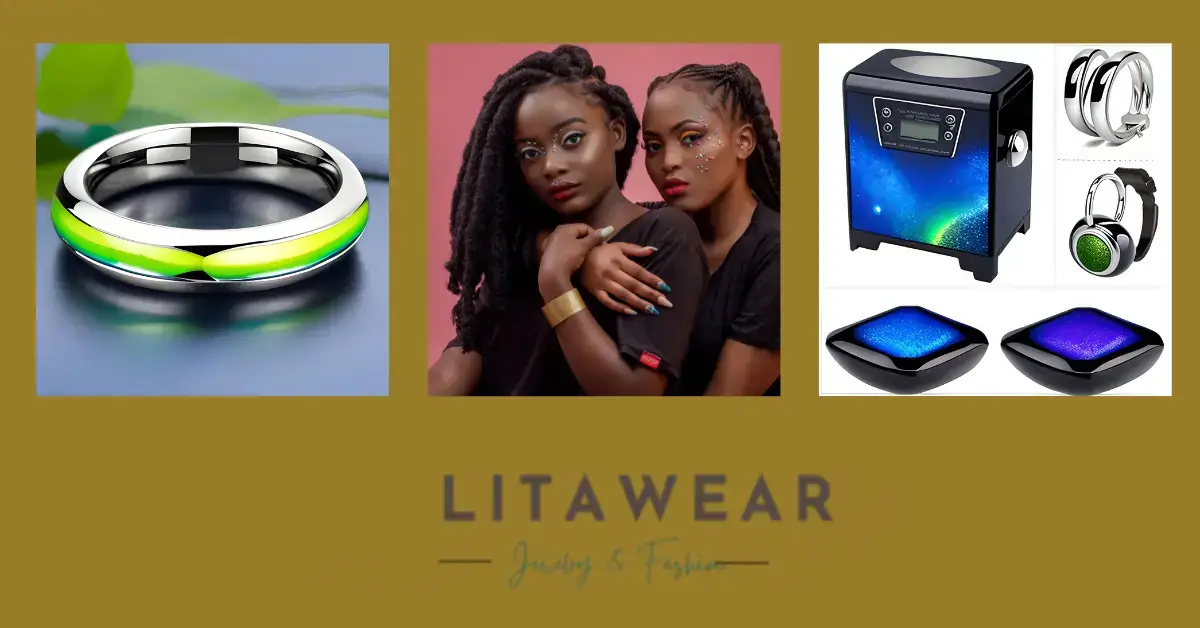Have you ever been curious about the intriguing color-changing rings phenomenon and rightfully asked yourself how do mood rings work?
If so, let’s explore the fascinating inner workings of this popular jewelry accessory and reveal the science behind its unique ability to reflect your emotional state.
Mood rings work using thermochromism liquid crystals that are sensitive to temperature changes. As human body temperature fluctuates according to emotional state, crystals within the ring respond by color change, based on the scientific principle that heat affects the arrangements of the molecules.
But there’s more to the story than just that. Let’s dive into the science behind why mood rings actually work.
The Science Behind How Mood Rings Work
Mood rings use liquid crystals, which are materials that have properties of both liquids and solids. These crystals are able to change their molecular structure in response to changes in temperature.
The liquid crystal inside a mood ring is specially formulated to be sensitive to changes in body temperature, which is why mood rings are said to reflect a person’s emotional state.
When the temperature of the liquid crystal alternates, the molecular structure of the crystal also changes.
This causes the crystal to absorb and reflect different wavelengths of light, which gives the ring its characteristic color.
For example, when the liquid crystal is at its coolest, it will appear black or dark brown.
As the temperature increases, the color translates to green, then blue, then purple, and finally pink.
Brief History of Mood Rings
Mood rings were first invented in the 1970s by two New York inventors, Josh Reynolds, and Maris Ambats.
The rings became popular in the 1970s and 1980s and were often worn as a fashion accessory or as a symbol of the New Age movement.
The popularity of mood rings waned in the 1990s but experienced a resurgence in the early 2000s. Today, mood rings remain a popular novelty item and are still worn by people of all ages.
How to Interpret Mood Ring Colors
While there is no scientific evidence to support specific color-emotion associations, people regularly associate certain colors with certain emotions or moods.
Here are some common interpretations of mood ring colors:
- Black or dark brown: Stressed or anxious
- Green: Balanced or content
- Blue: Calm or relaxed
- Purple: Creative or passionate
- Pink: Love or happiness
It’s important to note that these interpretations are subjective and can vary from one person to person, jewelry expert to another.
Nevertheless, this mood ring color chart and guide we wrote for you gives you an in-depth visual overview of the interdependency between colors, emotions, and mood rings.
Additionally, the color of a mood ring can be affected by factors other than body temperatures, such as the ambient temperature or the lighting in the room, and so forth.
Other Types of Mood Jewelry

In addition to classic moodrings, there are many other types of mood jewelry available, including necklaces, bracelets, and earrings.
These pieces of jewelry often use the same liquid crystal technology as contemporary mood rings while similarly exploring the mood ring emotion connection mystery.
One unique type of mood jewelry is mood beads, which are beads that change color in response to changes in temperature or light.
Mood beads can be used to create a wide variety of jewelry, including bracelets, necklaces, and earrings.
Another type of mood jewelry is mood pendants, which are pendants that contain a small piece of liquid crystal inside.
These pendants can be worn as necklaces or aesthetically added to charm bracelets.
Overall, there are many types of fascinating mood jewelry available, each with its own unique features and intriguing design elements.
Whether you prefer the timeless mood ring accessory or something edgy, there is sure to be a piece of mood jewelry that suits your style and personality.
How Do Mood Rings Work Summary
In conclusion, you now know how does a mood ring work, and you are fully aware of the captivating example of the jewelry science, psychology, and fashion intersection.
While they may not be scientifically accurate, they can still have a positive impact on the wearer’s emotional intelligence and self-awareness.
In other words, the next time you put on a mood ring of making a gift, remember that there’s more to it than just a fun accessory – it’s a window into your shifting emotions.
How Mood Rings Work FAQ
Can mood rings really tell my mood?
- While mood rings may not accurately reflect your mood, they do respond to changes in your body temperature, which can be affected by various factors, such as stress, exercise, or even ambient temperature.
Can mood rings break easily?
- Mood rings are generally durable, but they can be susceptible to damage if exposed to extreme temperatures or physical impact.
- It’s best to handle them with care and avoid wearing them during activities that may cause them to break or scratch.
Do mood rings work for everyone?
- Mood rings may not work for everyone, as they rely on individual differences in body temperature.
- Some people may have a more consistent body temperature, which may not produce noticeable color changes on the ring. Give it a try to find out.

